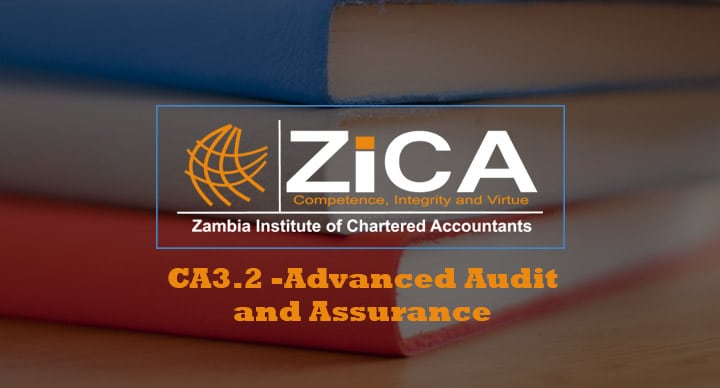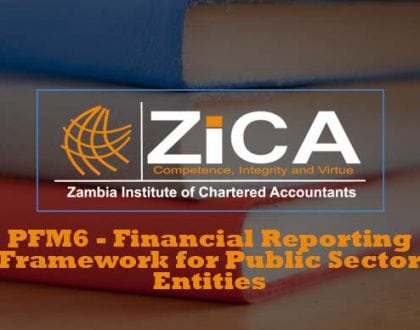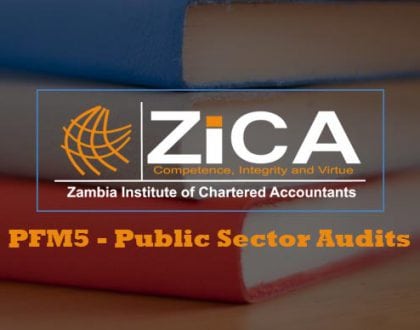CA3.2 -Advanced Audit and Assurance
No access plans exist.

Course Features
Course Details
CA3.2-Advanced Audit and Assurance
On completion of this module, candidates will reach a competency sufficient to be able to:- Evaluate the legal, regulatory and ethical issues involved with audit and assurance engagements
- Apply best practice in acceptance and management of audit and assurance assignments
- Appropriately plan, execute and report on audit and assurance assignments
| Syllabus topics | Weighting (%) | LO |
| Legal, regulatory and ethical issues involved with audit and assurance engagements | 15 | 1, 2 and 3 |
| Acceptance and management of audit and assurance assignments | 15 | 4 |
| Plan and execute audit and assurance assignments | 40 | 5, 6 and 7 |
| Conclude and report on audit and assurance assignments | 30 | 8 |
Learning outcomes
- LO1: Advise on legal, regulatory, technical, professional and ethical issues of audit and assurance engagements
- LO2: Evaluate the impact of national and international requirements on audit and assurance engagements
- LO3: Explain to stakeholder groups the purpose and scope of audit and assurance engagements
- LO4: Apply audit and assurance engagement practice policies
- LO5: Evaluate the audit and assurance engagement and prepare and engagement plan
- LO6: Evaluate internal controls
- LO7: Evaluate accounting treatments
- LO8: Evaluate audit and assurance evidence and conclude and report on the engagement
- Legal, regulatory and ethical issues: LO1, 2, 3
- Advise on technical, professional and ethical issues that may arise during assurance engagements including evaluation and communication with any party to the engagement
- Make judgements upon when it may be appropriate to refer a matter to a more senior colleague or for third party advice or consultation
- Explain the nature and purpose of laws, regulations standards and codes in the context of assurance engagements
- Explain the process and issues in the standard setting process at national and international level
- Evaluate the interaction between national laws and regulations and the requirements of an assurance engagement
- Evaluate the differences between different jurisdictions and how the deal with audit issues including national approaches, international approaches and approaches such as the US Sarbanes-Oxley and related requirements for audit
- Evaluate how audits may fail to meet expectations of users
- Evaluate the extent of legal liability including criminal and civil law liability including professional negligence issues and how they can be mitigated
- Accepting engagements and managing assignments: LO4
- Explain the legal, professional and ethical issues during the acceptance of assurance or audit assignments
- Analyse the potential issues that determine the nature, scope and extent of an assurance or audit engagement
- Evaluate appropriate procedures and personnel for management of an assurance or audit engagement
- Evaluate appropriate quality control measures that may be used by a firm and during the course of an assurance or audit engagement
- Evaluate the extent to which assurance and audit functions within an entity can be used or relied upon
- Evaluate appropriate monitoring and review procedures to effectively manage an audit or assurance engagement
- Explain the purposes and how external monitoring of audit and assurance engagements might operate to ensure firm or engagement quality
- Evaluate the considerations for an auditor of risk issues identified prior to accepting an engagement
- Evaluate how engagement terms can be agreed and recorded by an auditor including those agreed with a client and those imposed by laws or regulations
- Planning and undertaking work: LO5
- Evaluate based on a business scenario the areas of a business that may be important to understand to develop an effective audit plan
- Evaluate the techniques available to obtain an effective understanding
- Evaluate the situations when third party expertise may be required
- Evaluate and communicate the elements of audit risk including inherent risk, control risk and detection risk and their relationship to audit planning of procedures
- Assess based on a given business and a given scenario the business, reporting and compliance risks in the context of an assurance or audit engagement in the public or private sector
- Communicate advice or a report based on the assessment of internal controls
- Evaluate the components of risk for any assurance engagement
- Evaluate how business process effectiveness may affect an assignment
- Evaluate, drawing conclusions on the appropriateness of stated accounting treatments in the context of a given business and a given scenario in the public or private sector in an audit assignment based on local law and generally accepted accounting practice
- Evaluate the risks arising in a business scenario from accounting manipulation, error, fraud or other irregularities
- Evaluate the risks arising in a business scenario from business and financial issues
- Apply judgments and measures of materiality in carrying out an audit or assurance engagement
- Apply analytical procedures that may be used to plan an audit or assurance engagement
- Evaluate how risk and materiality judgments affect the planning of an assurance or audit engagement, including the nature, timing and extent of work
- Develop a proposed audit plan with justifications of judgements made based on a business scenario for an audit or assurance engagement including considerations relating to:
- Materiality decisions
- Internal control assessments including IT controls
- Reliance on internal audit, specialists and the work of other auditors
- Use of client generated data, information and reports
- Tests of control, substantive procedures including analytical procedures
- Visits to locations, branches and departments
- Explain appropriate procedures for assurance engagements for corporate social responsibility and sustainability reports
- Explain the differences between assurance engagements and audit engagements for profit and not-for profit entities include those in the public sector
- Explain in accordance with appropriate local legislation and international auditing and assurance standards the steps and procedures for audit and assurance work in the private and public sector
- Drawing conclusions and reporting
- Evaluate and propose how issues identified during the course of an assignment may be raised and dealt with in communication with management, directors and those charged with governance including action taken when issues cannot be agreed
- Apply procedures that may be used and considerations relating to the identification of subsequent events that may require adjustment or disclosure
- Apply procedures that may be used and considerations relating to the identification of risk issues that may require disclosure
- Evaluate quantitative and qualitative judgments based on the results of tests and evidence obtained
- Advise on the capability to report on an assurance engagement or audit engagement including reporting findings, giving an external audit opinion or dealing with other issues that may require to be included in an audit report
- Draft extracts of a suitable assurance report or management report based on a given scenario and entity
- Draft extracts of a suitable audit report or management report based on a given scenario and entity and in accordance with local law and international standards of accounting and audit
- Apply suitable judgements on when it may be appropriate to refer to a specialist in preparing and opinion or report
- Apply suitable judgements on when it may be appropriate to withdraw from, withdraw an opinion on or take other such appropriate action on an audit or assurance engagement
- Explain the issues that may be relevant and the nature of report that may be given relating to risk management, internal controls and governance. Technical knowledge requirements – International Standards on Auditing The technical appendix details the depth of treatment of required technical knowledge and the progression of competence over the levels in the qualification.
This course does not have any sections.





